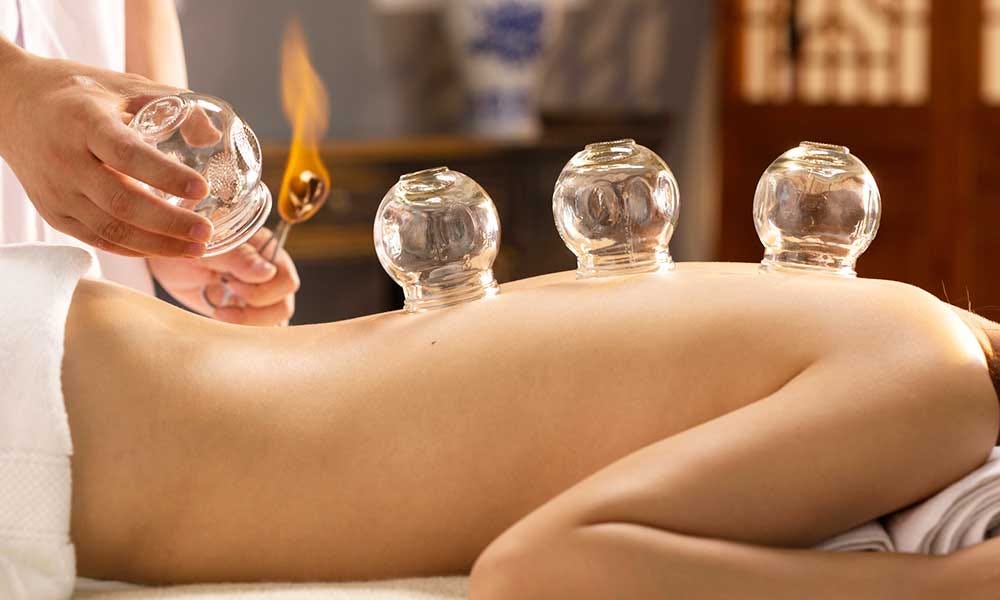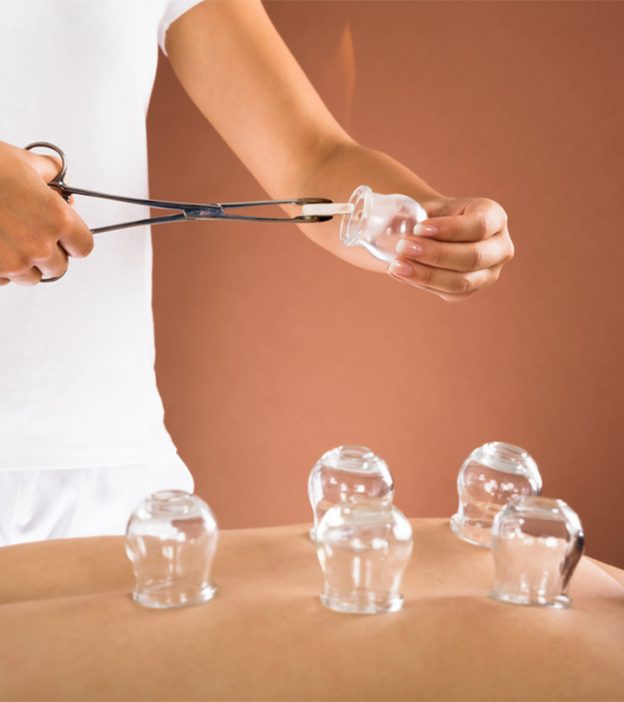Cupping therapy is an alternative healing method that uses suction to increase blood flow and may help with issues like back pain, neck pain, and headaches. However, it is essential to be aware of the potential side effects, such as temporary marks on the skin, skin discoloration, scars, burns, infections, and worsened skin conditions like eczema or psoriasis.
Despite these risks, most experts agree that cupping is generally safe as long as individuals are comfortable with the circular discolorations and experience minimal discomfort during skin suction. As with any therapy, it is essential to research and consult with a healthcare provider before undergoing cupping treatment.

I. Introduction To Cupping Therapy
Welcome to the world of cupping therapy! This section will explore the fascinating world of cupping therapy, its definition, and its historical origins. Cupping therapy is an ancient healing method that uses suction to improve blood flow and promote healing in various body parts. Throughout history, different cultures have utilized cupping therapy for its numerous health benefits. Let’s dive deeper into cupping therapy and discover its wonders.
A. Definition And Overview
Cupping therapy, also known as “cupping,” is a traditional healing technique that involves placing cups on the skin to create a suction effect. The cups can be made of various materials, like glass, bamboo, or silicone. Once the cups are placed on the skin, the air inside the cups is heated or suctioned, creating a vacuum-like effect. This suction effect draws the skin and underlying tissues into the cup, stimulating blood flow and promoting healing in the targeted area.
B. History Of Cupping Therapy
The history of cupping therapy dates back thousands of years. It has been practiced in various cultures, including ancient Egypt, China, Greece, and the Middle East. The ancient Egyptians were among the first civilizations to document cupping therapy, using animal horns as cups. In China, cupping therapy was mentioned in an old medical text called the “Huangdi Neijing,” dating back to around 300 BC.
Cupping therapy was also widely used in traditional Arabic medicine and was mentioned in the writings of the famous physician Al-Zahrawi. Over the centuries, cupping therapy has evolved, with different cultures employing unique cupping techniques and variations. Today, cupping therapy continues to be practiced and appreciated for its holistic health benefits.
Ii. Benefits Of Cupping Therapy
Cupping therapy offers various benefits, such as relieving back pain, neck pain, and headaches and improving blood circulation. An ancient healing method uses suction on the skin to increase blood flow to the affected area. However, it can cause bruising and skin infections if not done correctly.
A. Relief From Pain And Inflammation
Cupping therapy is known to provide effective relief from both pain and inflammation. Cupping therapy stimulates blood flow by creating suction on specific areas of the body, which helps alleviate pain caused by conditions such as arthritis, muscle tension, and fibromyalgia. The increased blood circulation also promotes the delivery of oxygen and nutrients to the affected areas, which can aid in reducing inflammation and promoting faster healing.
B. Improvement In Blood Flow And Circulation
One of the critical benefits of cupping therapy is its ability to improve blood flow and circulation. When the cups are placed on the skin, they create a vacuum that draws the blood to the surface, stimulating the circulatory system. This improved blood flow can help with various health conditions, such as promoting healing, reducing muscle stiffness, and even speeding up recovery from injuries. In addition, increased blood circulation can enhance the functioning of vital organs, leading to overall improved health and well-being.
C. Promotion Of Relaxation And Stress Reduction
Cupping therapy is not only beneficial for physical health but also for mental and emotional well-being. The suction created by the cups helps to stimulate the nervous system and trigger a relaxation response in the body. This promotes the release of endorphins, which are natural painkillers and mood enhancers. As a result, cupping therapy can help reduce stress, anxiety, and fatigue, allowing individuals to experience deep relaxation and an overall sense of well-being.
In Summary
- Cupping therapy provides relief from pain and inflammation.
- It improves blood flow and circulation.
- Cupping therapy promotes relaxation and stress reduction.
Cupping therapy offers many benefits, from pain relief and improved blood circulation to relaxation and stress reduction. If you’re considering trying cupping therapy, it’s essential to consult with a qualified practitioner to ensure the best results. Give cupping therapy a try, and experience its positive impact on your physical and mental well-being.
Iii. Side Effects And Risks Of Cupping Therapy
Cupping therapy may have side effects, including temporary marks, skin discoloration, scars, burns, and infections. It is essential to inform healthcare providers about these marks to avoid confusion with physical abuse signs. Cupping has the potential to worsen conditions such as eczema or psoriasis.
A. Temporary Skin Discoloration And Markings
One of the common side effects of cupping therapy is temporary skin discoloration and markings. When the cups are placed on the skin, they create suction, resulting in circular marks ranging from pink to purple. These marks are not harmful and typically fade within a few days or weeks. However, it’s important to note that these discolorations may be mistaken for signs of physical abuse. It is recommended to explain the origin of these marks to healthcare providers to avoid misunderstandings.
B. Potential For Skin Infection And Scarring
While cupping therapy is generally safe, there is a potential skin infection and scarring risk. When the skin is punctured or damaged during cupping, it can create an entry point for bacteria or viruses, leading to an infection. To minimize the risk of infection, it is crucial to ensure proper hygiene and sterilization of the cups and equipment used.
Scarring is also a possibility, primarily if the cupping therapy is performed incorrectly or with excessive force. Improper placement or removal of the cups can cause the skin to tear or blister, resulting in permanent scars. Therefore, seeking cupping therapy from a qualified and experienced practitioner is essential to reduce the likelihood of scarring.
C. Exacerbation Of Skin Conditions Like Eczema And Psoriasis
People with pre-existing skin conditions such as eczema or psoriasis should exercise caution before undergoing cupping therapy. The suction created by the cups can aggravate these conditions, causing flare-ups and worsening symptoms. It is advisable to consult with a healthcare professional before considering cupping if you have any underlying skin conditions.
In conclusion, while cupping therapy offers potential benefits, it is essential to be aware of its possible side effects and risks. Temporary skin discoloration and markings, the potential for skin infection and scarring, and the acerbation of existing skin conditions are essential factors to consider before cupping therapy. Individuals can make informed decisions regarding their well-being by being informed and taking the necessary precautions.


Frequently Asked Questions For Cupping Therapy: Benefits, Side Effects, And More
What Is A Negative Side Effect Of Cupping?
Cupping therapy may have adverse side effects such as temporary marks on the skin, persistent skin discoloration, scars, burns, infections, and worsening of eczema or psoriasis.
What Happens To Toxins After Cupping?
During cupping, blood flow increases, which helps to break up obstructions and release toxins from the body. Multiple cups may be used simultaneously, aiding in the excretion of old red blood cells.
Is It Normal To Feel Worse After Cupping?
It is expected to feel worse after cupping. You may experience fatigue or flu-like symptoms the next day as your body eliminates toxins. It is essential to rest and practice self-care during this time. Cupping therapy is generally considered safe with minimal side effects.
Is Cupping Therapy Good Or Bad?
Cupping therapy is safe, with limited side effects such as temporary discolorations and pinching sensations. It may help improve blood flow and alleviate pain. Some individuals may experience temporary fatigue or flu-like symptoms as the body eliminates toxins. Overall, cupping therapy can be beneficial when performed by a trained professional.
Conclusion
Cupping therapy is an ancient healing method that can provide various benefits, such as easing back pain, neck pain, and headaches, by increasing blood flow to the affected area. While cupping is generally considered safe, it can cause temporary marks on the skin. It may have side effects such as discoloration, scars, burns, infections, and aggravation of certain skin conditions.
It’s important to discuss any concerns with a healthcare provider before trying cupping therapy. Remember to take it easy and practice good self-care after a session.


